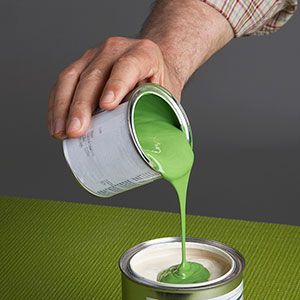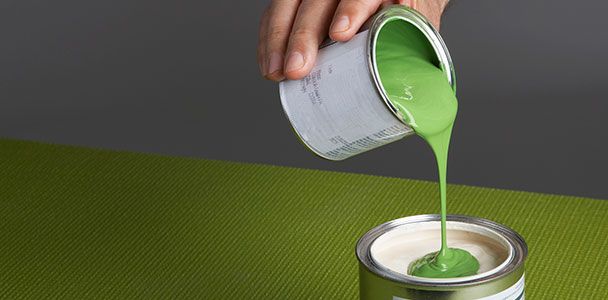
Rare is the project that uses up every last drop of paint. And while some of those colors will come in handy for touch-ups, others might be leftovers from projects long since painted over. Put those extras to work and create your own custom color. Here are tips from the pros at Ace Hardware on how to blend better:
1. Keep within the same brand
Specific formulas vary across companies, which means that mixing different brands can lead to lumpy or separated paint in the bucket, or uneven coverage on the wall. To increase your odds of a smooth blend, choose two paints from within the same brand. Even better? Stay within the same line.
2. Avoid outdoor paints
These are formulated to resist long-term wear—from rain and dirt, for instance—but are less likely to hold up against indoor stains, such as red wine, spaghetti sauce, or markers. Plus, outdoor paints have higher VOCs (solvents that get released into the air as the paint dries) than indoor paints, so they’re more likely to give off smelly vapors as they dry.
3. Mind the hue
Red-leaning colors—including browns, oranges, and purples—will lean pink when mixed with white. Blend them with green-based paints and you’ll end up with a brown mess. Pay attention to color undertones before proceeding.
4. Do a test run
Before you commit to a large pour, figure out what the paint will look like by mixing up a smaller batch. As long as the proportions are the same for both batches, the colors should look the same.
5. Blend well
If you don’t mix thoroughly, you’ll risk uneven color and patchy coverage. Your best bet is a paint mixing attachment that connects with your drill, but if you don’t have one, you can use a stir stick—just be sure to stir for at least 2 or 3 minutes, or until the colors are completely mixed.
6. Don’t use blended paint on anything precious
Applying mixed paint will usually void any sort of manufacturer warranty, since companies can’t guarantee that the new formula will hold up, and results can be, well, mixed. To avoid future headaches, stick with paint projects that won’t see a lot of wear and tear and that are easy enough to repaint in the future—think coffee tables, not kitchen floors.

